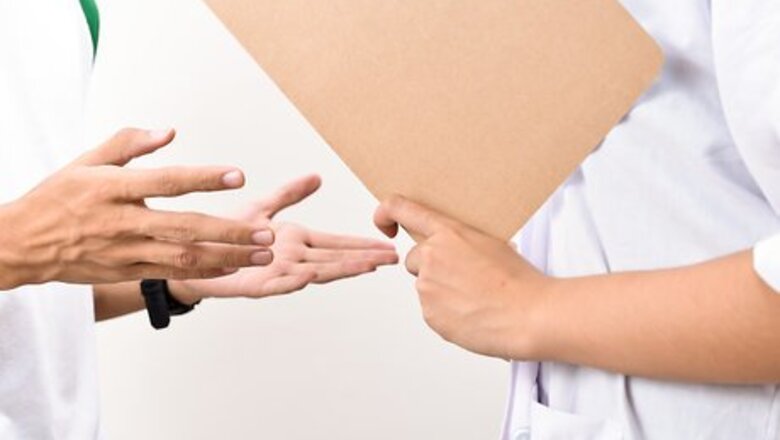
views
X
Research source
Practitioners should always refer to their facility's resources for specific procedures.

Identify your patient. Ask the patient to state their first and last name and their date of birth. Confirm this information against your labels as well as the patient's hospital wristband (if inpatient) or health card (if outpatient). If using a hospital wristband, you should also match the patient's health number or medical record number (MRN) if present and if your hospital policy dictates.

Perform venipuncture according to your facility's protocols and procedures. As soon as the collection is over, engage the safety feature on the needle to prevent a needlestick injury. Invert all tubes to adequately mix the blood with the additives.

Remain at the patient's bedside. Tubes should always be labelled immediately after venipuncture in front of the patient. Do not exit the patient's room or allow the patient to leave until all your tubes have been labelled.

Peel the label off its backing and stick it on your finger. A typical blood specimen label has the following information on it: Patient's first and last name. Date of birth, age, and sex. MRN or health number plus the lab accession number. The tests to be performed on that specific sample. The tube colour or type, varies by facility. (In these images: LAV = lavender top EDTA; GOLD = gold top SST; LT GRN = light green PST) A barcode to be scanned for specimen tracking and analysis.

Hold the tube horizontally so that the coloured stopper is facing left.

Place the label on the tube. Ideally, the lab label should be covering the tube manufacturer label to leave a small window so the specimen is still visible. The left edge of the label should be directly against the tube stopper. It helps to roll the tube with your hands or fingers to ensure complete adhesion.

Repeat for your remaining tubes. Always label one tube at a tube.

Avoid incorrect placement or positioning. Labels should not: Be crooked or slanted. The barcode should be straight. Be wrinkled, creased, or torn. Be wrapped around the tube so the barcode is perpendicular, or folded over itself like a "flag". Be covering the specimen window, obscuring the view of the sample.

Follow specific downtime procedures if IT failures prevent you from generating labels. At minimum, handwrite the patient's first and last name, MRN or health number, date of birth, time of collection in 24-hour format, and your initials or employee ID. You should write this information on a blank specimen label or on the tube manufacturer label using indelible blue or black ink.















Comments
0 comment